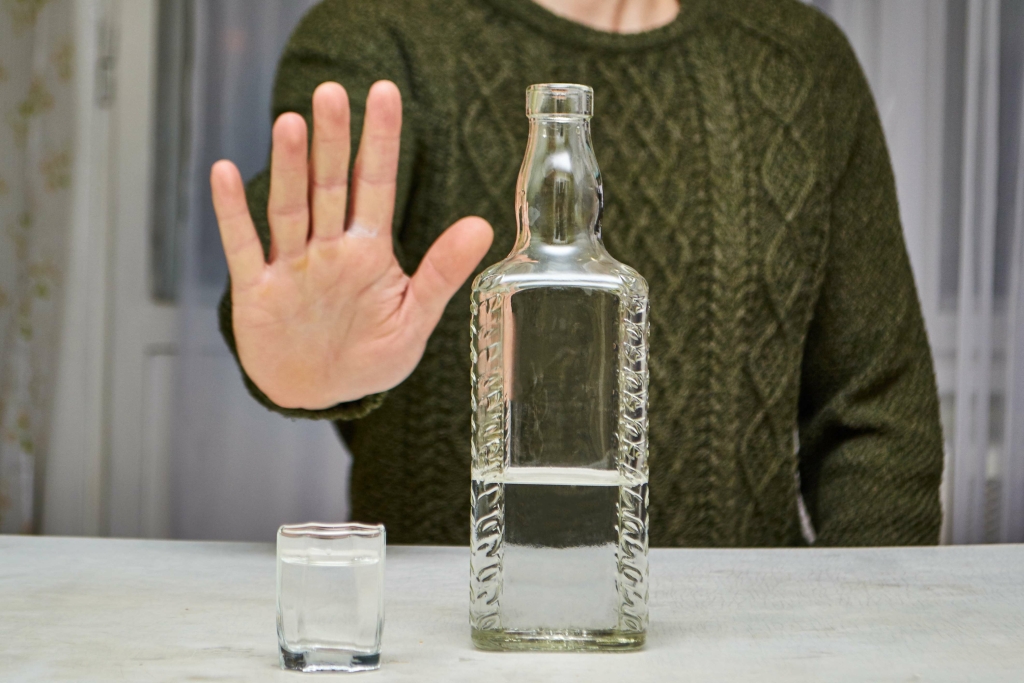Researchers have long posited that offering goal choice (i.e., non-abstinence and abstinence treatment options) may be key to engaging more individuals in SUD treatment, including those earlier in their addictions (Bujarski et al., 2013; Mann et al., 2017; Marlatt, Blume, & Parks, 2001; Sobell & Sobell, 1995). To date, however, there has been little empirical research directly testing this hypothesis. Advocates of nonabstinence approaches often point to indirect evidence, including research examining reasons people with SUD do and do not enter treatment. This literature – most of which has been conducted in the U.S. – suggests a strong link between abstinence goals and treatment entry. For example, in one study testing the predictive validity of a measure of treatment readiness among non-treatment-seeking people who use drugs, the authors found that the only item in their measure that significantly predicted future treatment entry was motivation to quit using (Neff & Zule, 2002). The study was especially notable because most other treatment readiness measures have been validated on treatment-seeking samples (see Freyer et al., 2004).

They suggest that the redeployment of attention utilized in stress-reduction procedures based on the techniques of mindfulness meditation (Kabat-Zinn, 1990) can be integrated with cognitive therapy procedures into a system of attentional control training. This approach would be applicable to recovered depressed patients and would serve as a means of preventing relapse. Teasdale and colleagues provide a description of this training which teaches generic psychological, self-control skills and can be used on a continuing basis to maintain skills after initial training. While no data on the effectiveness of this approach in preventing relapse exist to date, this appears to be a useful and stimulating conceptualization of relapse and relapse prevention that deserves further attention. Because relapse is the most common outcome of treatment for addictions, it must be addressed, anticipated, and prepared for during treatment.
5. Feasibility of nonabstinence goals
There are two major types of high-risk situations, those with intrapersonal determinants, in which the person’s response is physical or psychological in nature, and interpersonal determinants, those that are influenced by other individuals or social networks. In sum, research suggests that achieving and sustaining moderate substance use after treatment is feasible for between one-quarter to one-half of individuals with AUD when defining moderation as nonhazardous drinking. While there is evidence that a subset of individuals who use drugs engage in low-frequency, non-dependent drug use, there is insufficient research on this population to determine the proportion for whom moderation is a feasible treatment goal. However, among individuals with severe SUD and high-risk drug or alcohol use, the urgency of reducing substance-related harms presents a compelling argument for engaging these individuals in harm reduction-oriented treatment and interventions.
- The myth that we need to erase all past mistakes and start with a “blank slate” if we want to live a healthful life is dangerous because it keeps us striving for fad fitness trends rather than consistency.
- He is a member of over a dozen professional medical associations and in his free time enjoys a number of different activities.
- Sometimes, it begins from the very moment we even consider the notion of using again.
- The abstinence violation effect (AVE) describes the tendency of people recovering from addiction to spiral out of control when they experience even a minor relapse.
- Subsequently inadequate coping and lack of assertiveness and low self-efficacy maintained his drinking.
John’s key responsibilities include maintaining the day-to-day operations from both a clinical and housing perspective. John’s goal is to monitor every department to ensure proper policies and procedures are in place and client care is carried out effortlessly. John joined Amethyst as a behavioral health technician where he quickly developed strong personal relationships with the clients through support and guidance. John understands first hand the struggles of addiction and strives to provide a safe environment for clients. Abstinence violation effect may cause us to feel these way about urges and cravings as well.
How Common is Accidental Drug Overdose?
Future research must test the effectiveness of nonabstinence treatments for drug use and address barriers to implementation. The current review highlights a notable gap in research empirically evaluating the effectiveness of nonabstinence approaches for DUD treatment. While multiple harm reduction-focused treatments for AUD have strong empirical support, there is very little research testing models of nonabstinence treatment for drug use. Despite compatibility with harm reduction abstinence violation effect definition in established SUD treatment models such as MI and RP, there is a dearth of evidence testing these as standalone treatments for helping patients achieve nonabstinence goals; this is especially true regarding DUD (vs. AUD). In sum, the current body of literature reflects multiple well-studied nonabstinence approaches for treating AUD and exceedingly little research testing nonabstinence treatments for drug use problems, representing a notable gap in the literature.
Even though you may think this time is different, if your drinking and drug use has gotten out of hand in the past, it is unlikely to be different now. A common pattern of self-regulation failure occurs for addicts and chronic dieters when they ‘fall off the wagon’ by consuming the addictive substance or violating their diets [5]. Marlatt coined the term abstinence violation effect to refer to situations in which addicts respond to an initial indulgence by consuming even more of the forbidden substance [11]. In one of the first studies to examine this effect, Herman and Mack experimentally violated the diets of dieters by requiring them to drink a milkshake, a high-calorie food, as part of a supposed taste perception study [27]. Although non-dieters ate less after consuming the milkshakes, presumably because they were full, dieters paradoxically ate more after having the milkshake (Figure 1a). This disinhibition of dietary restraint has been replicated numerous times [20,28] and demonstrates that dieters often eat a great deal after they perceive their diets to be broken.
Addiction Programs
Importantly, there has also been increasing acceptance of non-abstinence outcomes as a metric for assessing treatment effectiveness in SUD research, even at the highest levels of scientific leadership (Volkow, 2020). Many advocates of harm reduction believe the SUD treatment field is at a turning point in acceptance of nonabstinence approaches. Indeed, a prominent harm reduction psychotherapist and researcher, Rothschild, argues that the harm reduction approach represents a “third wave of addiction treatment” which follows, and is replacing, the moral and disease models (Rothschild, 2015a).
Again, many experts agree that a one-time lapse into using drugs or alcohol does not equally relapse. Relapse occurs when this behavior accelerates back into prolonged and compulsive patterns of drug abuse. Despite this, lapsing is still a risk factor and makes a person more prone to relapse. The abstinence violation effect, described by the famous substance abuse researcher Alan Marlatt, occurs when someone who was made a commitment to abstinence suffers an initial lapse that they define as a violation of their abstinence.
III.D. Abstinence Violation Effect
Being able to understand how your thoughts, emotions, and behaviors play off of each other can help you to better control and respond to them in a positive way. Acknowledging your triggers and developing the appropriate coping skills should be a part of a solid relapse prevention program. Lastly, treatment staff should help you to learn how to recognize the signs of an impending lapse or relapse so that you can ask for help before it happens.
It has also been used to advocate for managed alcohol and housing first programs, which represent a harm reduction approach to high-risk drinking among people with severe AUD (Collins et al., 2012; Ivsins et al., 2019). For example, offering nonabstinence treatment may provide a clearer path forward for those who are ambivalent about or unable to achieve abstinence, while such individuals would be more likely to drop out of abstinence-focused treatment. To date there has been limited research on retention rates in nonabstinence treatment. This suggests that individuals with non-abstinence goals are retained as well as, if not better than, those working toward abstinence, though additional research is needed to confirm these results and examine the effect of goal-matching on retention. Multiple theories of motivation for behavior change support the importance of self-selection of goals in SUD treatment (Sobell et al., 1992).


